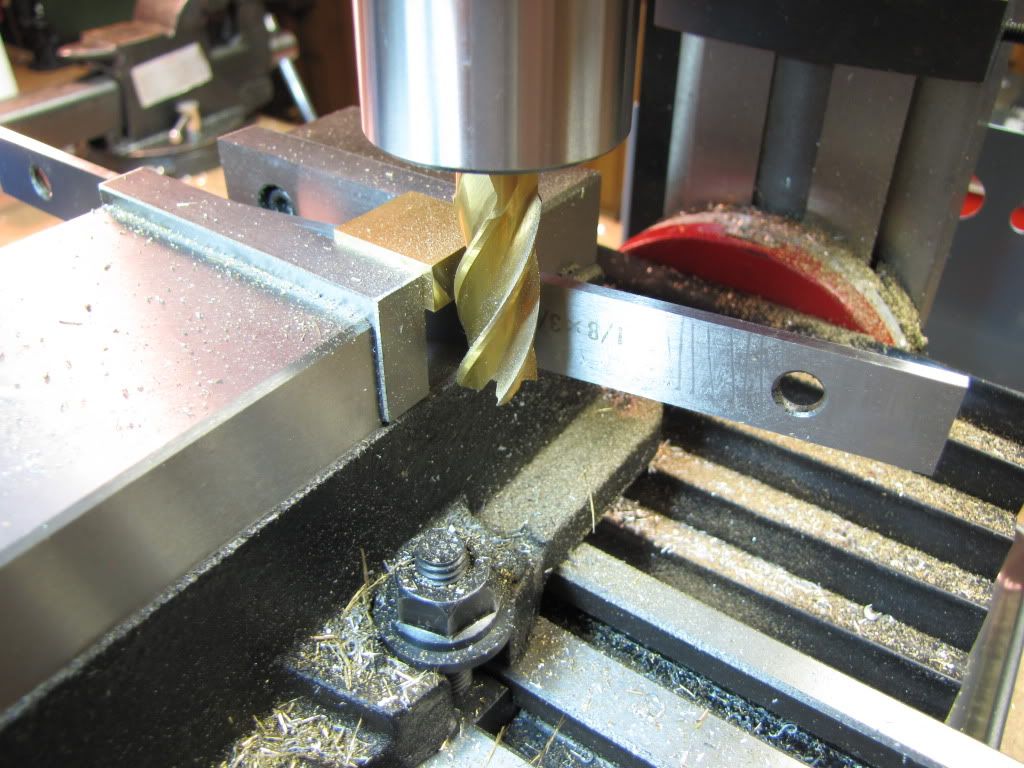zeeprogrammer
Well-Known Member
- Joined
- Mar 14, 2009
- Messages
- 3,362
- Reaction score
- 13
Near disaster tonight.
I was squaring a rectangular block of brass with the mill.
Had it up on parallel bars in the vise.
When I started, the parallels were not near the end of the piece.
The vibration moved one of the parallels out far enough for the end mill to catch.
The parallel shot out...at an angle...and got stuck.
The pic is a recreation...but this is how it ended up.

If the parallel hadn't hung up, and if someone had been eyeballing from that side...they might've lost an eye.
Otherwise...no real damage other than a small benign ding on the parallel.
Still, I'm happy I had my TP handy.
Point? Those parallels are loose when used to hold a part up in the vise. Take care to make sure they won't move. Other threads have used a packing peanut. [Edit: I had included 'a rag' but it was pointed out that the end mill could grab this. When I worked the second part...I used a balled up piece of paper towel. Hopefully this is sufficient to hold the parallel bars but soft enough to rip up should something grab it.]
I'm sure the more knowledgeable ones on this forum will have additional ideas.
I was squaring a rectangular block of brass with the mill.
Had it up on parallel bars in the vise.
When I started, the parallels were not near the end of the piece.
The vibration moved one of the parallels out far enough for the end mill to catch.
The parallel shot out...at an angle...and got stuck.
The pic is a recreation...but this is how it ended up.

If the parallel hadn't hung up, and if someone had been eyeballing from that side...they might've lost an eye.
Otherwise...no real damage other than a small benign ding on the parallel.
Still, I'm happy I had my TP handy.
Point? Those parallels are loose when used to hold a part up in the vise. Take care to make sure they won't move. Other threads have used a packing peanut. [Edit: I had included 'a rag' but it was pointed out that the end mill could grab this. When I worked the second part...I used a balled up piece of paper towel. Hopefully this is sufficient to hold the parallel bars but soft enough to rip up should something grab it.]
I'm sure the more knowledgeable ones on this forum will have additional ideas.






